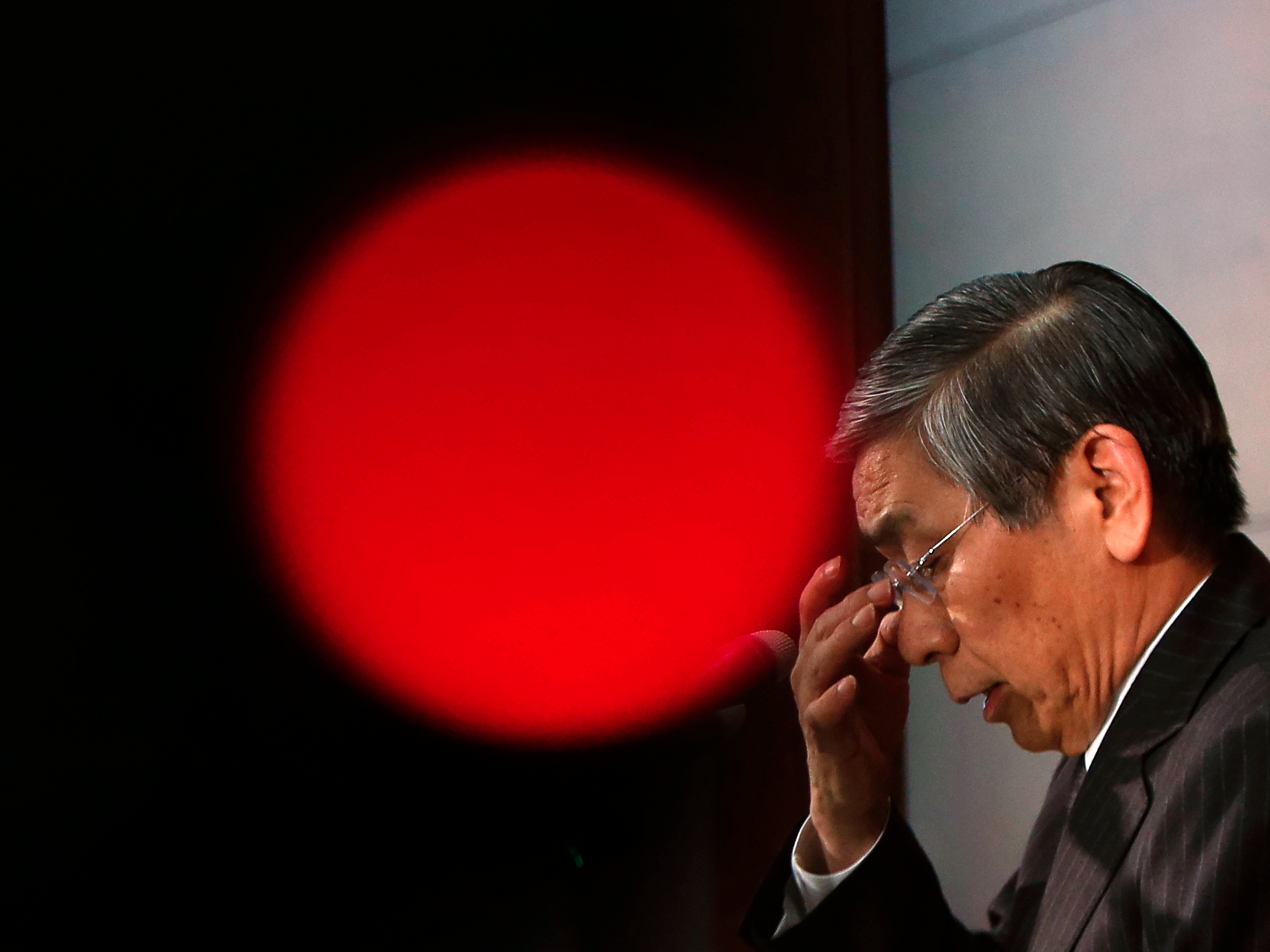On Tuesday, the Bank of Japan held its benchmark interest rate at -0.10% and announced a shift in policy, opting to target the shape of the Japanese yield curve.
In its statement, the BOJ said it will purchase Japanese government bonds, or JGBs, with the aim of keeping the 10-year Japanese Government Bond rate “more or less at the current level” of about 0%.
In a special report sent out to clients on Wednesday, Deutsche Bank Strategist George Saravelos says the shift by the central bank is a sign that its “running out of policy options,” and he makes note of three observations in particular.
The BOJ is giving up on trying to push down real interest rates. Saravelos believes Tuesday’s announcement shows the central bank is now “prioritizing financial stability and bank profitability over real rates.” Tuesday’s decision might actually lead to tighter conditions. Saravelos cites the example of a negative shock that raises demand for JGBs and reduces inflation expectations, causing the BOJ reduce the amount of JGBs its buying, which would cause real interest rates to rise. The policy is “a government invitation for helicopter money.” Saravelos believes the decision will increase the Japanese government’s ability to take fiscal action.
So how does it all play out? Saravelos says USD/JPY will fall to 94.00 by the end of 2016. That would mean the yen would strengthen by 6.6% from its current level of 100.65, and rally back to levels last seen in the middle of 2014.
And Credit Suisse’s Christopher Hine seems to agree that a stronger yen is in the cards. In a note sent out to clients on Thursday, Hine wrote, “Our core target remains lower at the 61.8% retracement level at 94.78, where we would look for a floor.”


